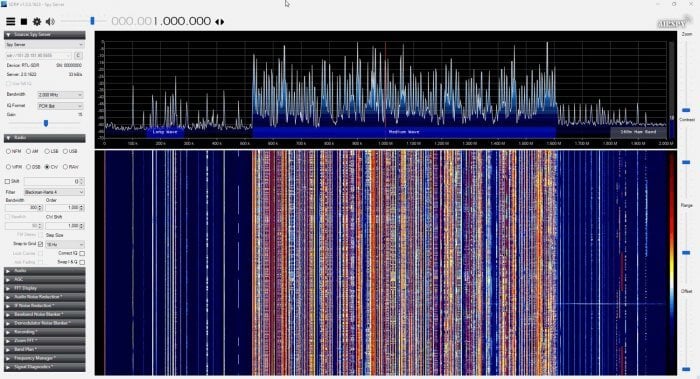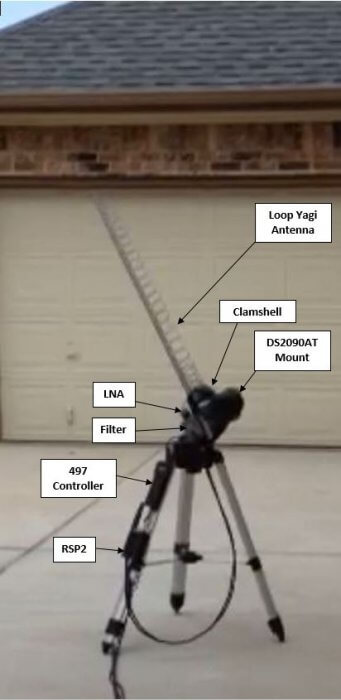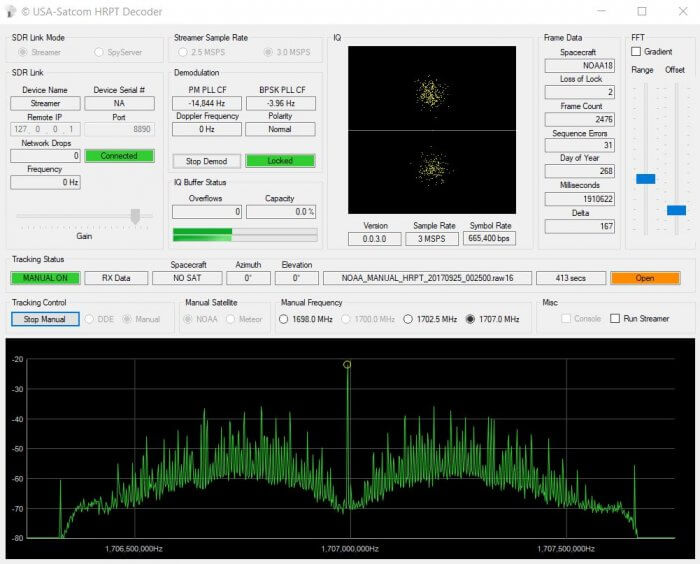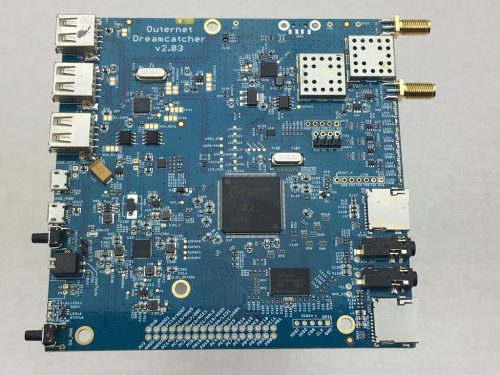SpyServer Now Supports RTL-SDR Direct Sampling
SDR#'s SpyServer streaming server now supports the direct sampling mode on RTL-SDR dongles and it's probably the cheapest way to set up a HF streaming server. SpyServer is a streaming server for SDR# and Airspy products. Although it's designed for Airspy products it also works well with RTL-SDR dongles.
On RTL-SDR dongles the direct sampling mode allows you to receive HF frequencies by bypassing the tuner. The dynamic range is not quite as good as using an upconverter and there are Nyquist images from sampling at 28.8 MHz centered around 14.4 MHz, but in most cases it is good enough to give people decent HF results especially if filtering is used. Normally a hardware hack is required to enable direct sampling, but our RTL-SDR Blog V3 units have direct sampling built in and ready to go just by connecting an HF antenna to the SMA port, and enabling the Q-branch direct sampling mode.
There is a sample server set up at sdr://151.20.181.90:5555.

Direct Sampling for #RTLSDR was added to Spy Server. This must be the most affordable networked HF radio ever.
— prog' (@lambdaprog) November 14, 2017
Give it a try: sdr://151.20.181.90:5555https://t.co/IS16Up5ogT pic.twitter.com/xp9RYH3yN0




